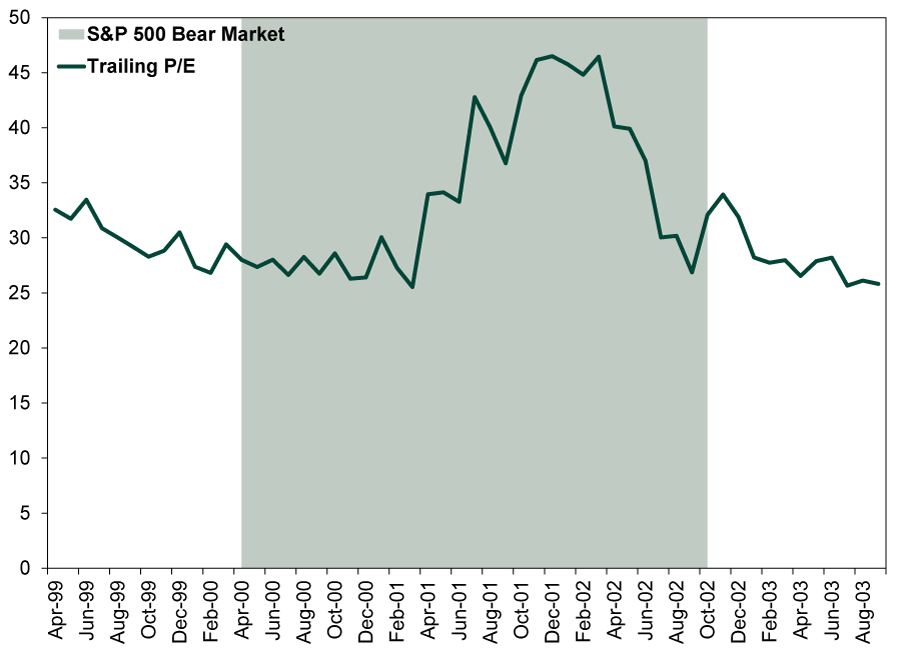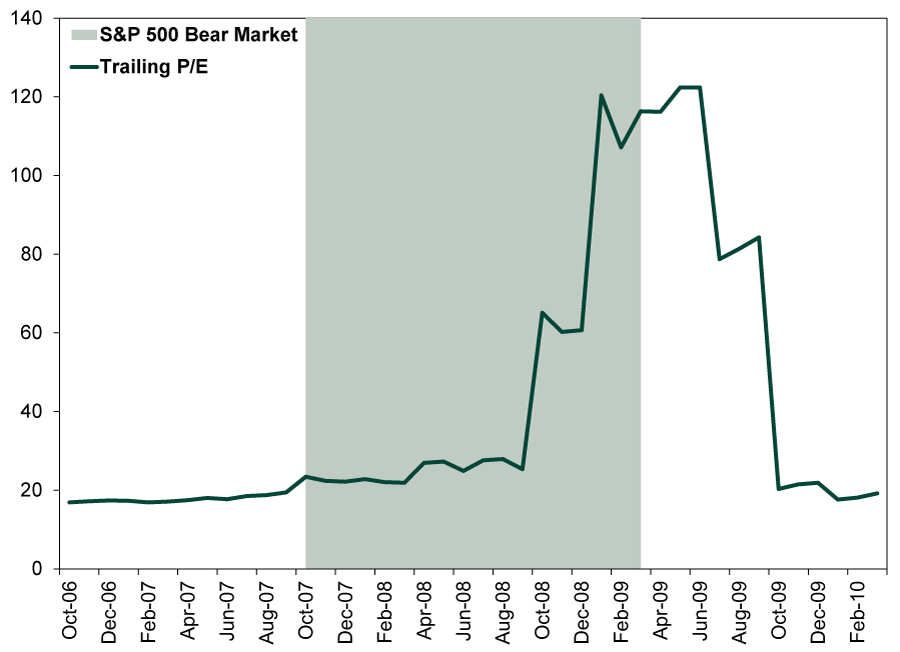Personal Wealth Management / Market Analysis
Don't Expect P/Es to Signal the Low
We agree it is way too early to declare the bear market over, but P/Es aren’t the reason why.
Stocks have staged a nice rally since their most recent bear market low on March 23, and we will be the first to tell you it is impossible to know whether this is a new bull market. Bear market rallies are common, and this bear market’s end will be clear only with several weeks’ or months’ hindsight. Accordingly, we think it is entirely sensible to question whether this rally has fundamental support, as several pundits have. However, the logic underlying many of these don’t trust the rally articles is suspect, in our view. If pundits aren’t calling it “Fed supported,” they are dwelling on valuations and warning price-to-earnings ratios are too lofty to signal that the bottom is in. In our view, this ignores some key points about P/Es. One, they aren’t a timing tool. Two, their behavior during bear markets is far from consistent, and their inflection points don’t always coincide with a bear market’s beginning and end.
Exhibits 1 and 2 show the S&P 500’s trailing P/E before, during and after the past two bear markets. As Exhibit 1 shows, anyone waiting for P/Es to fall well below their level at the Tech Bubble’s peak would have missed out on the ensuing bull market’s first year at least. As Exhibit 2 shows, during the bear market that accompanied the global financial crisis, P/Es were flat for nearly a year before soaring into triple-digit territory in its final three months. Waiting for them to bottom out would have cost you the bull’s first six months—a period when the S&P 500 jumped 54.6%.[i]
Exhibit 1: 12-Month Trailing P/Es and the 2000 – 2002 Bear Market
Source: Global Financial Data, Inc., as of 4/20/2020. Monthly S&P 500 12-month trailing price-to-earnings ratio, April 1999 – October 2003.
Exhibit 2: 12-Month Trailing P/Es and the 2007 – 2009 Bear Market
Source: Global Financial Data, Inc., as of 4/20/2020. Monthly S&P 500 12-month trailing price-to-earnings ratio, October 2006 – March 2010.
At first, this might seem counterintuitive, considering how quickly stocks tend to plunge toward the end of a bear market—and how quickly they usually bounce once the recovery begins. But the P/E ratio has a numerator and a denominator. Most observers focus on the numerator—stock prices—and forget how much fluctuations in the denominator, earnings, can affect the result. Earnings tend to take a beating during a downturn, and they often don’t start recovering until several months or more after a new bull market is underway. If earnings tumble more than stocks during a bear market’s final throes, that can cause P/Es to rise—that is what happened in 2009. Similarly, stocks’ rising in a new bull market before earnings improve can cause P/Es to remain elevated. Then, when earnings bounce, P/Es can start falling for a long stretch.
In our view, this shows why P/Es make for a poor timing tool. In bull markets, they are an ok sentiment indicator, as spikes often indicate euphoria. But during a bear, there is often just too much skew from wild swings in both denominator and numerator. Plus, it is inherently backward-looking to compare stock prices (a forward-looking economic indicator) to earnings (which result from past economic fundamentals). Ordinarily we would acknowledge that forward P/Es, which use analysts’ expectations for earnings over the next year, can be a decent gauge of sentiment late in a bear market, but we are skeptical that will be the case this time. Earnings forecasts are all over the map due to the utter lack of clarity on when and how fast most of the US economy will reopen. We suspect that makes forward P/E ratios more like price-to-guess than anything else.
The frustrating reality of stock investing is that there is no perfect signal or indicator to mark a bear market’s end in real time. At the simplest level, this bear market will end when sentiment has become too pessimistic, teeing up a strong likelihood that reality beats expectations. But gauging this isn’t easy even during a typical bear market. This time, with an economic recovery hinging on when politicians decide to allow businesses to reopen and people to return to work, it is much more difficult to handicap when fundamentals will start turning around.
Markets move most on probabilities, not possibilities. They also typically look 3 – 30 months ahead. Toward the end of that window, based on all the latest medical news, it looks exceedingly likely that society will have herd immunity and/or a COVID-19 vaccine, enabling life to return to normal globally. Stocks will probably move well ahead of that, as they generally recover before fundamentals visibly improve. But toward the shorter end of the 3 – 30 month range, it wouldn’t shock us if volatility continued as policymakers’ shifting guidance forced investors to alter their expectations for better or worse. That likely remains true whether or not history eventually shows we are nearly a month into a bull market today. So unless fundamentals markedly deteriorate from here, we think long-term growth investors will benefit most from staying disciplined, bracing for volatility and looking longer term.
If you would like to contact the editors responsible for this article, please message MarketMinder directly.
*The content contained in this article represents only the opinions and viewpoints of the Fisher Investments editorial staff.
Get a weekly roundup of our market insights
Sign up for our weekly e-mail newsletter.

You Imagine Your Future. We Help You Get There.
Are you ready to start your journey to a better financial future?

Where Might the Market Go Next?
Confidently tackle the market’s ups and downs with independent research and analysis that tells you where we think stocks are headed—and why.







